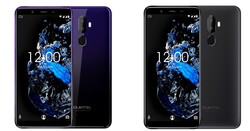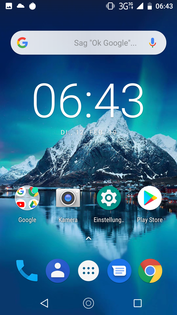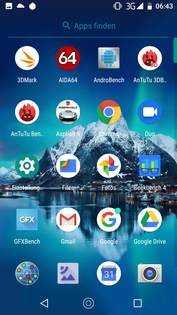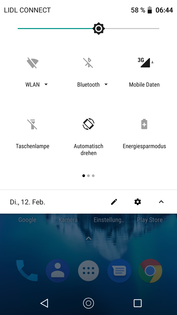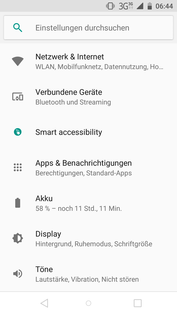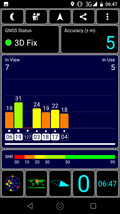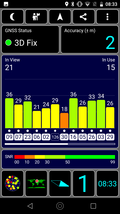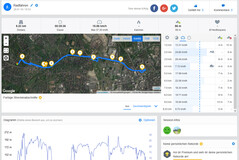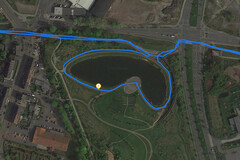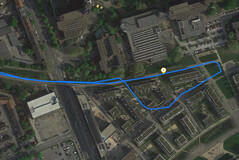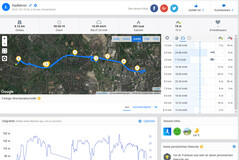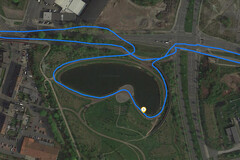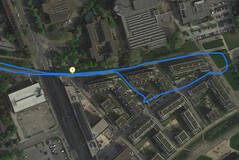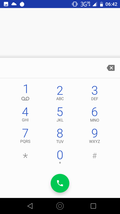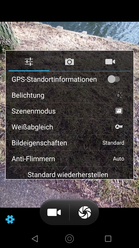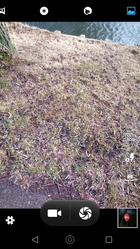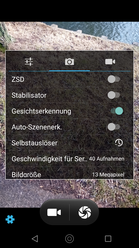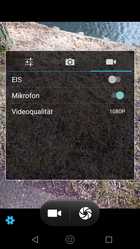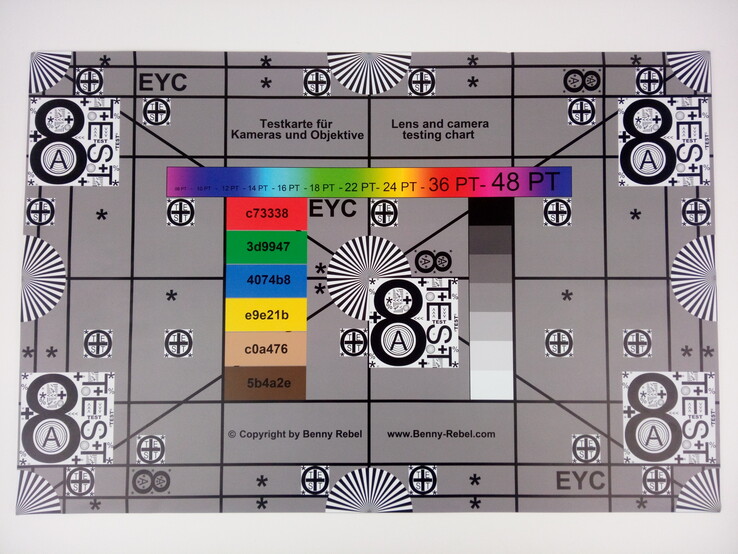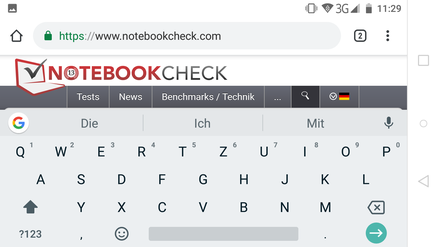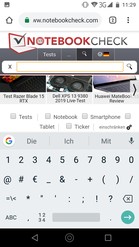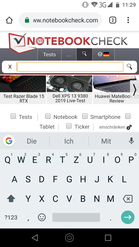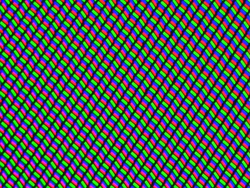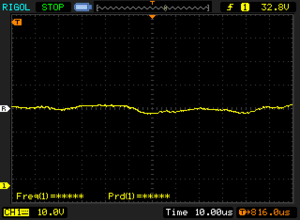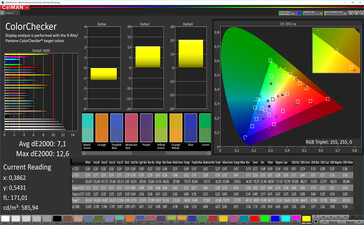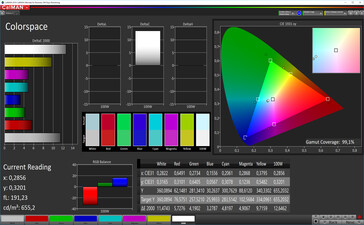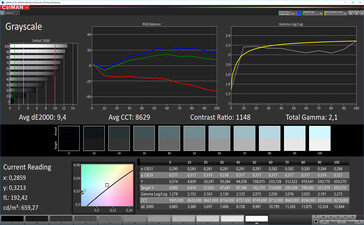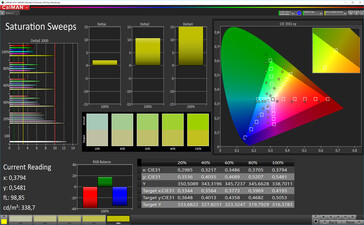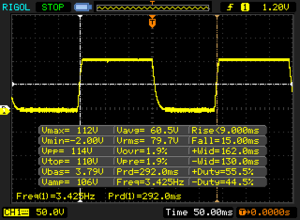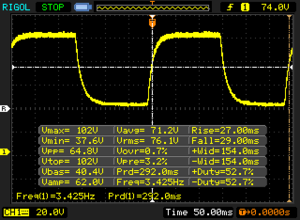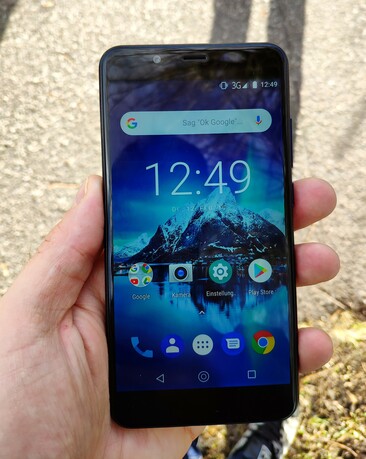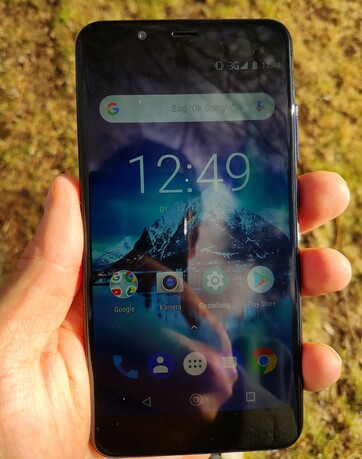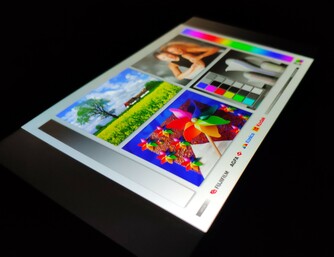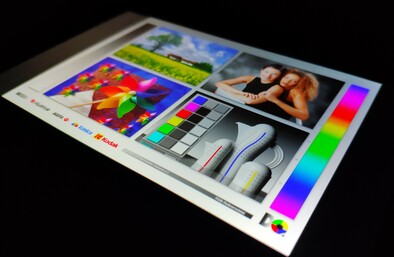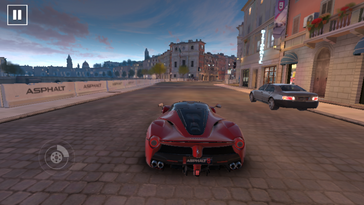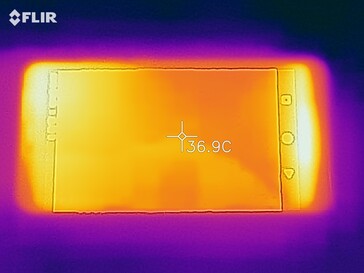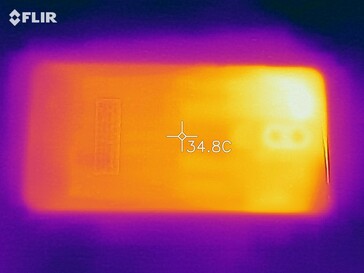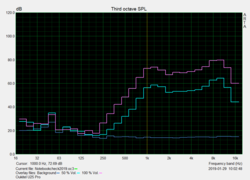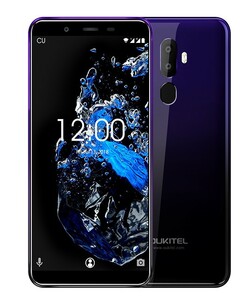OUKITEL U25 Pro Smartphone Review
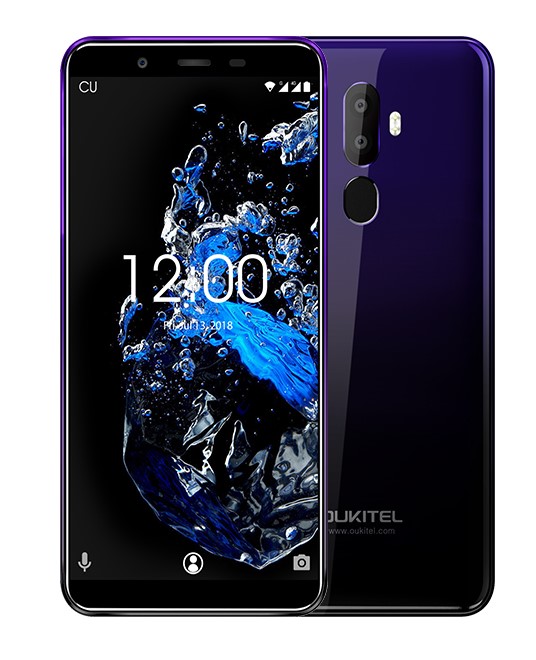
Introduced in December last year, the U25 Pro is OUKITEL’s latest entry-level and features a 5.5-inch IPS display, which is 1080p despite the device’s low asking price of between €80 to €100 (~$90/113). OUKITEL also equips the U25 Pro with 4 GB RAM and a MediaTek MT6750T SoC, which is broadly the same chip as the MT6750. Both SOCs integrate an ARM Mali-T860 GPU and eight ARM-A53 cores.
Other features include a 3,200 mAh battery, a fingerprint sensor and 64 GB of internal storage, which can be expanded with up to 128 GB microSD cards. There is also space for a second nano SIM for dual-SIM functionality, but at the expense of using a microSD card.
We have chosen to compare the U25 Pro against other budget smartphones. Our comparison devices include the Nokia 2.1, the Wiko Harry 2 and the Xiaomi Redmi 6A.
Case
The U25 Pro has a plastic case, which is available in two colours. There is a grey version and a purple model that OUKITEL calls Twilight. The latter has a gradient finish, which gradually changes from purple to dark blue and then to black.
Our review unit is well-built and does not feel cheap despite its price. The power and volume buttons feel solid and have distinct pressure points. Moreover, the case is sturdy and does not bend when we apply pressure to it.
The U25 Pro has thick top and bottom bezels though, which result in a 72% screen-to-body ratio. This is reasonable for a budget smartphone, but it makes the front of the U25 Pro look outdated.
Connectivity
OUKITEL has equipped the U25 Pro with 64 GB of eMMC flash storage, of which approximately 53 GB is available. You could add up to a 128 GB microSD card should you need more space. The device does not support exFAT, which means that it cannot read files that are larger than 4 GB. However, the U25 Pro can format microSD cards as internal storage, so you can store apps and data on it, rather than just media files.
The U25 Pro also has a USB 2.0 Type-C port, which is still impressive for such a cheap device. The port supports USB On-The-Go (OTG), so you can connect peripherals such as USB sticks or external keyboards, which could prove useful. You can connect to external monitors wirelessly too, but keep in mind that the U25 Pro cannot play DRM-protected content in HD as it only has Widevine L3 certification; most applications require Widevine L1 compliance to stream HD content. We suspect OUKITEL will not update the U25 Pro to support Widevine L1, as Sony did with the Xperia XZ2.
Software
The U25 Pro ships with Android 8.1 Oreo, which OUKITEL has added to with its UI. Our review unit had up-to-date security patches installed at the time of our tests in December 2018, which is good. OUKITEL has not stated whether it will update the U25 Pro to Android 9.0 Pie, but we suspect not as most budget smartphones only receive security updates and not system updates.
The OUKITEL UI is largely unchanged from stock Android, except for minor differences such as the onscreen home button, which is two concentric circles rather than the single circle used on most Android smartphones. Likewise, our review unit arrived with few third-party apps preinstalled save for the standard suite of Google apps.
Communication & GPS
The U25 Pro supports Bluetooth 4.0, which is now outdated. Moreover, there is no NFC chip, so you cannot use the U25 Pro with services such as Google Pay.
The U25 Pro is a dual-SIM device, but its second SIM nano slot also doubles as a microSD card reader, which means that you must choose between dual-SIM functionality or microSD card expansion.
The device supports most GSM and 3G frequencies along with LTE Cat.6 for up to 300 Mbps download and 50 Mbps upload speeds. The U25 Pro supports most LTE bands too, although it does not work with Band 28, which carriers are increasingly using, so the device may come unstuck in some regions in a few years.
The U25 Pro supports most Wi-Fi standards up to IEEE 802.11 n and can only connect to 2.4 GHz networks. Our review unit achieved a -35 dBm attenuation when placed next to our Telekom Speedport W921V router, which is decent.
Our test device averaged around 90 MBit/s in both iperf3 Client Wi-Fi tests that we conducted. These transfer speeds put the U25 Pro above our comparison devices, but they are over 50% slower than the class average and 87% slower than what the Xiaomi Mi Mix 3 achieved in the same tests. However, Wi-Fi performance fluctuated wildly during our tests with the U25 Pro sometimes dropping to just 44 MBit/s for some reason.
| Networking | |
| iperf3 transmit AX12 | |
| Xiaomi Mi Mix 3 | |
| Oukitel U25 Pro | |
| Xiaomi Redmi 6A | |
| Nokia 2.1 | |
| Wiko Harry 2 | |
| iperf3 receive AX12 | |
| Xiaomi Mi Mix 3 | |
| Oukitel U25 Pro | |
| Wiko Harry 2 | |
| Xiaomi Redmi 6A | |
| Nokia 2.1 | |
The U25 Pro uses BeiDou, Galileo, GLONASS, GPS and SBAS for location services. Our test device achieved a satellite fix with up to 2 metres (~6.5 ft) outside, which dropped to 5 metres (~16.4 ft) when we tested it indoors. In short, the U25 Pro is surprisingly accurate and does a much better job than many of its competitors.
We also subjected our test device to a bike ride to test its location accuracy against the Garmin Edge 500, a professional navigation system. The U25 Pro deviated by around 110 m (~328 ft) compared to the route that the Garmin plotted over our 9 km (~5.6 mi) bike ride, which is impressively accurate. The U25 Pro struggled to keep up with us in certain sections as demonstrated by our screenshots below, but overall it is accurate enough for general navigation tasks.
Telephone Functions & Call Quality
The U25 Pro has good call quality, which we tested over the Vodafone network in Germany. The device supports Wi-Fi calls too, but it must be provisioned by your carrier for the functionality to work. The microphone is decent too with our call partner always able to hear us clearly.
Cameras
The U25 Pro has dual rear-facing cameras, the main one of which is a 13 MP Sony IMX135 sensor that is supported by a secondary 2 MP sensor. The latter should provide the device with depth of field data to create bokeh effect photos, but it does nothing just like other OUKITEL smartphones that we have reviewed. The second sensor appears to be there just for show as our review unit uses software algorithms to create bokeh effect pictures.
The 13 MP takes surprisingly good photos in ideal lighting conditions. Photos taken in bright ambient light have decent dynamics and are detailed, although the focus is sometimes off while shutter speeds are slow. The Sony IMX135 sensor is now nearly 6 years old, but it takes passable pictures in cloudy conditions too, albeit there is some minor image noise present. We also noticed that most pictures have a slight reddish tint to them regardless of the lighting, which is worth keeping in mind.
The 13 MP sensor has an f/2.0 aperture and is supported by a dual tone LED flash in poor lighting. However, its performance in low-light is awful, as demonstrated below in Scene 2. The image is dominated by image noise and is woefully underexposed. The only positive is that the electric candle does not look blown out, but the whole image lacks detail, and the face of our toy rabbit is hardly recognisable.
The U25 Pro also has a 5 MP front-facing camera with an f/2.8 aperture. The Samsung Galaxycore GC5025 sensor takes passable selfies, but most photos are blurry and washed out. Low-light performance is predictably terrible too.
The front-facing camera only records video in up to 720p at up 30 FPS, which is underwhelming. The 13 MP rear-facing camera does a better job and can shoot in up to 1080p at 30 FPS.
Accessories & Warranty
The U25 Pro comes with a quick start guide, a modular 5-W charger (1A, 5V) and a USB cable. OUKITEL includes a silicone case and a screen protector too, while there is also a headphone jack to Type-C adapter.
OUKITEL provides 12 months manufacturer’s warranty, but you may have to return the device to China for a warranty repair. Hence, we would recommend purchasing the U25 Pro from a reputable third-party retailer where possible for better warranty coverage in your region.
Please see our Guarantees, Return policies and Warranties article for more country-specific information.
Input Devices & Operation
The U25 Pro uses the standard three on-screen navigation buttons and Google GBoard as its default keyboard. The device also has a 10-point multitouch touchscreen, which worked well and precisely during our tests. It is also protected by glass that has a smooth finish.
OUKITEL has equipped the U25 Pro with a fingerprint reader that is located on the back of the device. The sensor worked reliably during our tests, but our review unit is slow to unlock. You can also use a code, pattern or PIN for authentication should you prefer.
Display
The U25 Pro has a 5.5-inch IPS panel that operates natively at 1080p in a 16:9 aspect ratio. The display has a pixel density of more than 400 PPI, which means that you should not notice any individual pixels even if you look closely. 1080p panels may be common for most smartphones, but our comparison devices all have 720p displays, except for the considerably more expensive Mi Mix 3. In short, the U25 Pro stands out in this regard with its high-resolution display.
Our review unit also impressed us with its high average maximum brightness, which X-Rite i1Pro 2 measures at 649 cd/m². This is brighter than even the Mi Mix 3 of our comparison devices, which is outstanding. The more realistic APL50 test also determined a maximum luminosity of 668 cd/m², which dropped to 648 cd/m² with the ambient light sensor activated. Overall, the U25 Pro has an incredibly bright display, but its minimum brightness is too high for our liking at 26 cd/m².
| |||||||||||||||||||||||||
Brightness Distribution: 90 %
Center on Battery: 649 cd/m²
Contrast: 1159:1 (Black: 0.56 cd/m²)
ΔE ColorChecker Calman: 7.1 | ∀{0.5-29.43 Ø4.78}
ΔE Greyscale Calman: 9.4 | ∀{0.09-98 Ø5}
99.1% sRGB (Calman 2D)
Gamma: 2.1
CCT: 8629 K
| Oukitel U25 Pro IPS LCD, 1920x1080, 5.5" | Wiko Harry 2 1440x720, 5.5" | Nokia 2.1 IPS, 1280x720, 5.5" | Xiaomi Redmi 6A IPS, 1440x720, 5.5" | Xiaomi Mi Mix 3 OLED, 2340x1080, 6.4" | |
|---|---|---|---|---|---|
| Screen | 21% | 5% | 16% | 38% | |
| Brightness middle (cd/m²) | 649 | 479 -26% | 338 -48% | 404 -38% | 599 -8% |
| Brightness (cd/m²) | 623 | 491 -21% | 327 -48% | 400 -36% | 593 -5% |
| Brightness Distribution (%) | 90 | 87 -3% | 82 -9% | 82 -9% | 96 7% |
| Black Level * (cd/m²) | 0.56 | 0.2 64% | 0.27 52% | 0.26 54% | |
| Contrast (:1) | 1159 | 2395 107% | 1252 8% | 1554 34% | |
| Colorchecker dE 2000 * | 7.1 | 6.17 13% | 5.36 25% | 4.28 40% | 1.4 80% |
| Colorchecker dE 2000 max. * | 12.6 | 11.46 9% | 9.77 22% | 9.97 21% | 3.2 75% |
| Greyscale dE 2000 * | 9.4 | 7.1 24% | 6.2 34% | 3.5 63% | 2 79% |
| Gamma | 2.1 105% | 2.066 106% | 2.345 94% | 2.213 99% | 2.25 98% |
| CCT | 8629 75% | 8441 77% | 8460 77% | 6899 94% | 6496 100% |
| Color Space (Percent of sRGB) (%) | 98.2 |
* ... smaller is better
Screen Flickering / PWM (Pulse-Width Modulation)
| Screen flickering / PWM not detected | |||
In comparison: 53 % of all tested devices do not use PWM to dim the display. If PWM was detected, an average of 8111 (minimum: 5 - maximum: 343500) Hz was measured. | |||
Moreover, our review unit has a comparatively high black value, which X-Rite i1Pro 2 and APL50 measure at 0.56 cd/ m² and 0.57 cd/m² respectively. The high black value results in a disappointingly low 1,159:1 contrast ratio, which is well beaten by our comparison devices.
We also subjected our review unit to additional display tests with a spectrophotometer and CalMAN analysis software. These tests determined that the U25 Pro has high DeltaE deviations and a higher than ideal colour temperature, but these are on par with our budget comparison devices. The display also has a slight turquoise tint to it too.
Display Response Times
| ↔ Response Time Black to White | ||
|---|---|---|
| 24 ms ... rise ↗ and fall ↘ combined | ↗ 9 ms rise | |
| ↘ 15 ms fall | ||
| The screen shows good response rates in our tests, but may be too slow for competitive gamers. In comparison, all tested devices range from 0.1 (minimum) to 240 (maximum) ms. » 53 % of all devices are better. This means that the measured response time is worse than the average of all tested devices (20.2 ms). | ||
| ↔ Response Time 50% Grey to 80% Grey | ||
| 56 ms ... rise ↗ and fall ↘ combined | ↗ 27 ms rise | |
| ↘ 29 ms fall | ||
| The screen shows slow response rates in our tests and will be unsatisfactory for gamers. In comparison, all tested devices range from 0.165 (minimum) to 636 (maximum) ms. » 92 % of all devices are better. This means that the measured response time is worse than the average of all tested devices (31.6 ms). | ||
The U25 Pro has a glossy display, which can induce reflections. However, its maximum brightness is so high that you should have no trouble reading the display even in direct sunlight, although it may look rather dim as demonstrated by our photo below.
Our test device has stable viewing angles too, thanks to its IPS panel. We noticed a slight drop in brightness at acute viewing angles, but there are no colour distortions, so the U25 Pro should remain readable from practically any angle.
Performance
OUKITEL has equipped the U25 Pro with a MediaTek MT6750T SoC, which integrates 8 ARM Cortex-A53 cores across two clusters. The primary cluster has 4 cores that operate at up to 1.5 GHz, which is supported by 4 power-saving cores that can clock up to 1 GHz. The SoC also integrates an ARM Mali-T860 MP2 GPU.
Our review unit generally operates smoothly in daily use, but we noticed some minor lags when cycling through the UI and more prolonged delays while multitasking. Apps can take a while to load too, but this should be expected from budget smartphones.
The MT6750T SoC performed comparatively well in synthetic benchmarks and typically had the edge of the Helio A22 MT6762M that powers the Xiaomi Redmi 6A. The U25 Pro outperformed our budget comparison devices in GPU benchmarks too, but it is blown away by the Mi Mix 3 with its much more powerful SoC.
| PCMark for Android | |
| Work performance score (sort by value) | |
| Oukitel U25 Pro | |
| Wiko Harry 2 | |
| Nokia 2.1 | |
| Xiaomi Redmi 6A | |
| Xiaomi Mi Mix 3 | |
| Average Mediatek MT6750T (4012 - 5154, n=2) | |
| Work 2.0 performance score (sort by value) | |
| Oukitel U25 Pro | |
| Wiko Harry 2 | |
| Nokia 2.1 | |
| Xiaomi Redmi 6A | |
| Xiaomi Mi Mix 3 | |
| Average Mediatek MT6750T (3042 - 3850, n=2) | |
| GFXBench 3.0 | |
| on screen Manhattan Onscreen OGL (sort by value) | |
| Oukitel U25 Pro | |
| Wiko Harry 2 | |
| Nokia 2.1 | |
| Xiaomi Redmi 6A | |
| Xiaomi Mi Mix 3 | |
| Average Mediatek MT6750T (6.7 - 7.5, n=2) | |
| Average of class Smartphone (18 - 166, n=159, last 2 years) | |
| 1920x1080 1080p Manhattan Offscreen (sort by value) | |
| Oukitel U25 Pro | |
| Wiko Harry 2 | |
| Nokia 2.1 | |
| Xiaomi Redmi 6A | |
| Xiaomi Mi Mix 3 | |
| Average Mediatek MT6750T (7.1 - 7.1, n=2) | |
| Average of class Smartphone (12 - 606, n=158, last 2 years) | |
| GFXBench 3.1 | |
| on screen Manhattan ES 3.1 Onscreen (sort by value) | |
| Oukitel U25 Pro | |
| Wiko Harry 2 | |
| Nokia 2.1 | |
| Xiaomi Redmi 6A | |
| Xiaomi Mi Mix 3 | |
| Average Mediatek MT6750T (4.5 - 5, n=2) | |
| Average of class Smartphone (11 - 166, n=159, last 2 years) | |
| 1920x1080 Manhattan ES 3.1 Offscreen (sort by value) | |
| Oukitel U25 Pro | |
| Wiko Harry 2 | |
| Nokia 2.1 | |
| Xiaomi Redmi 6A | |
| Xiaomi Mi Mix 3 | |
| Average Mediatek MT6750T (n=1) | |
| Average of class Smartphone (8.4 - 413, n=158, last 2 years) | |
| AnTuTu v7 - Total Score (sort by value) | |
| Oukitel U25 Pro | |
| Wiko Harry 2 | |
| Xiaomi Redmi 6A | |
| Xiaomi Mi Mix 3 | |
| Average Mediatek MT6750T (51621 - 54871, n=2) | |
Likewise, the U25 Pro performed well in browser benchmarks when running Chrome. Web pages and media content loaded quickly and without errors during our tests, and our test device generally finished in the midfield of our benchmark comparison tables.
| JetStream 1.1 - Total Score | |
| Xiaomi Mi Mix 3 (Chrome 70) | |
| Xiaomi Redmi 6A (Chrome 70) | |
| Oukitel U25 Pro (Chrome Version 72) | |
| Average Mediatek MT6750T (15.7 - 18.7, n=2) | |
| Nokia 2.1 (Chrome 70) | |
| Wiko Harry 2 (Chrome 71) | |
| Octane V2 - Total Score | |
| Average of class Smartphone (2228 - 121337, n=201, last 2 years) | |
| Xiaomi Mi Mix 3 (Chrome 70) | |
| Xiaomi Redmi 6A (Chrome 70) | |
| Oukitel U25 Pro (Chrome Version 72) | |
| Average Mediatek MT6750T (3082 - 3303, n=2) | |
| Wiko Harry 2 (Chrome 71) | |
| Nokia 2.1 (Chrome 70) | |
| Mozilla Kraken 1.1 - Total | |
| Wiko Harry 2 (Chrome 71) | |
| Oukitel U25 Pro (Chrome Version 72) | |
| Average Mediatek MT6750T (13903 - 14543, n=3) | |
| Nokia 2.1 (Chrome 70) | |
| Xiaomi Redmi 6A (Chrome 70) | |
| Xiaomi Mi Mix 3 (Chrome 70) | |
| Average of class Smartphone (257 - 28190, n=156, last 2 years) | |
* ... smaller is better
OUKITEL has equipped the U25 Pro with comparably fast eMMC flash storage that resoundingly beats our budget comparison devices in Androbench 3-5. Our review unit achieved good random 4KB transfer speeds that were only beaten by our Xiaomi comparison devices.
However, the U25 Pro has a relatively slow microSD card reader. Our review unit achieved between 10% and 21% slower transfer speeds in our tests with a Toshiba Exceria Pro M401 than our comparison devices and is similarly slower than the class average too.
| Oukitel U25 Pro | Wiko Harry 2 | Nokia 2.1 | Xiaomi Redmi 6A | Xiaomi Mi Mix 3 | Average 64 GB eMMC Flash | Average of class Smartphone | |
|---|---|---|---|---|---|---|---|
| AndroBench 3-5 | -22% | -13% | 29% | 75% | 19% | 960% | |
| Sequential Read 256KB (MB/s) | 284.3 | 227.3 -20% | 288.3 1% | 277.5 -2% | 675 137% | 277 ? -3% | 2216 ? 679% |
| Sequential Write 256KB (MB/s) | 195.1 | 59.1 -70% | 51.2 -74% | 131.7 -32% | 206.8 6% | 178.4 ? -9% | 1837 ? 842% |
| Random Read 4KB (MB/s) | 56 | 35.47 -37% | 50.5 -10% | 33.94 -39% | 133.2 138% | 60.7 ? 8% | 294 ? 425% |
| Random Write 4KB (MB/s) | 16.76 | 11.6 -31% | 13.45 -20% | 52.2 211% | 19.54 17% | 33.8 ? 102% | 334 ? 1893% |
| Sequential Read 256KB SDCard (MB/s) | 71.9 ? | 80.3 ? 12% | 79.4 ? 10% | 82.8 ? 15% | 77.4 ? 8% | ||
| Sequential Write 256KB SDCard (MB/s) | 54.2 ? | 63.4 ? 17% | 61.9 ? 14% | 65.7 ? 21% | 58.3 ? 8% |
Games
The ARM Mali-T860 MP2 can play most modern games at reduced graphics, but the experience is not always smooth. Our review unit averaged around 23 FPS in complex games such as "Asphalt 9: Legends" and "PUBG Mobile", which is too low for a comfortable gaming experience in our opinion. By contrast, games such as "Dead Trigger 2" run much smoother and are playable.
We should also point out that the touchscreen and sensors worked reliably during our gaming tests.
Emissions
Temperature
The U25 Pro operates coolly during daily use, with its case reaching a maximum of 32 °C (~90 °F) at idle. The device should never feel hot too as it only reaches 35.7 °C (~96 °F) under sustained load, so the U25 Pro should remain comfortable to hold even when it is pushed hard.
(+) The maximum temperature on the upper side is 35.7 °C / 96 F, compared to the average of 35.2 °C / 95 F, ranging from 21.9 to 247 °C for the class Smartphone.
(+) The bottom heats up to a maximum of 32 °C / 90 F, compared to the average of 34 °C / 93 F
(+) In idle usage, the average temperature for the upper side is 29.6 °C / 85 F, compared to the device average of 32.9 °C / 91 F.
Speakers
The U25 Pro has a mono speaker that sits on the back of the device. In short, the speaker is terrible. The speaker reached a maximum of 85 dB(A) in our tests, but the audio sounds distorted at low volumes. The frequency range is dominated by mid and high-pitched tones too. Predictably, bass tones are all but absent, but this is a problem even with laptops, so this a minor criticism.
We would recommend connecting an external speaker or headphones for a better listening experience. The U25 Pro can also output audio over Bluetooth or USB Type-C. OUKITEL includes a headphone jack adapter in the box should you want to connect traditional headphones.
Oukitel U25 Pro audio analysis
(+) | speakers can play relatively loud (84.7 dB)
Bass 100 - 315 Hz
(-) | nearly no bass - on average 44.5% lower than median
(±) | linearity of bass is average (8.1% delta to prev. frequency)
Mids 400 - 2000 Hz
(±) | reduced mids - on average 9.2% lower than median
(±) | linearity of mids is average (10.8% delta to prev. frequency)
Highs 2 - 16 kHz
(±) | higher highs - on average 5.9% higher than median
(+) | highs are linear (3.5% delta to prev. frequency)
Overall 100 - 16.000 Hz
(-) | overall sound is not linear (32.2% difference to median)
Compared to same class
» 82% of all tested devices in this class were better, 2% similar, 16% worse
» The best had a delta of 11%, average was 35%, worst was 134%
Compared to all devices tested
» 91% of all tested devices were better, 2% similar, 7% worse
» The best had a delta of 4%, average was 24%, worst was 134%
Wiko Harry 2 audio analysis
(±) | speaker loudness is average but good (78.5 dB)
Bass 100 - 315 Hz
(-) | nearly no bass - on average 57.8% lower than median
(+) | bass is linear (0% delta to prev. frequency)
Mids 400 - 2000 Hz
(-) | nearly no mids - on average 57.8% lower than median
(+) | mids are linear (0% delta to prev. frequency)
Highs 2 - 16 kHz
(-) | nearly no highs - on average 57.8% lower than median
(+) | highs are linear (0% delta to prev. frequency)
Overall 100 - 16.000 Hz
(-) | overall sound is not linear (120% difference to median)
Compared to same class
» 89% of all tested devices in this class were better, 9% similar, 3% worse
» The best had a delta of 11%, average was 35%, worst was 134%
Compared to all devices tested
» 97% of all tested devices were better, 3% similar, 1% worse
» The best had a delta of 4%, average was 24%, worst was 134%
Power Management
Power Consumption
The U25 Pro is a relatively inefficient device that consumes more than our comparison devices. Our review unit consumes a minimum of 1.47 W at idle, which rises to a maximum of 5.99 W under sustained load. The U25 Pro finished bottom of all categories in our comparison table apart from maximum consumption under load, where it finishes second bottom to the Mi Mix 3. This is no success though as the Mi Mix 3 is equipped with a much more powerful SoC. Overall, the U25 Pro has above-average power consumption for a budget device.
| Off / Standby | |
| Idle | |
| Load |
|
Key:
min: | |
| Oukitel U25 Pro 3200 mAh | Wiko Harry 2 2900 mAh | Nokia 2.1 4000 mAh | Xiaomi Redmi 6A 3000 mAh | Xiaomi Mi Mix 3 3200 mAh | Average Mediatek MT6750T | Average of class Smartphone | |
|---|---|---|---|---|---|---|---|
| Power Consumption | 16% | 40% | 41% | 37% | 11% | 0% | |
| Idle Minimum * (Watt) | 1.47 | 1.2 18% | 0.7 52% | 0.7 52% | 0.49 67% | 1.305 ? 11% | 0.848 ? 42% |
| Idle Average * (Watt) | 2.88 | 2 31% | 1.2 58% | 1.2 58% | 0.67 77% | 2.44 ? 15% | 1.434 ? 50% |
| Idle Maximum * (Watt) | 2.96 | 2.7 9% | 1.9 36% | 2 32% | 0.87 71% | 2.5 ? 16% | 1.618 ? 45% |
| Load Average * (Watt) | 4.74 | 4.2 11% | 3.2 32% | 3.4 28% | 3.64 23% | 4.23 ? 11% | 7.01 ? -48% |
| Load Maximum * (Watt) | 5.99 | 5.2 13% | 4.8 20% | 4 33% | 9.04 -51% | 5.98 ? -0% | 11.3 ? -89% |
* ... smaller is better
Battery Life
OUKITEL has equipped the U25 Pro with a 3,200 mAh battery, which is about as large as those in our comparison devices, except for the Nokia 2.1. However, our review unit achieved an underwhelming runtime in our Wi-Fi battery life test and needed recharging between 2 and 4:30 hours sooner than our comparison devices. We conduct this test by setting the display to approximately 150 cd/m² and running a script that simulates the load required to render websites.
In short, the U25 Pro should last a full working day of moderate use. Many other comparably priced smartphones offer much better battery life though.
| Oukitel U25 Pro 3200 mAh | Wiko Harry 2 2900 mAh | Nokia 2.1 4000 mAh | Xiaomi Redmi 6A 3000 mAh | Xiaomi Mi Mix 3 3200 mAh | |
|---|---|---|---|---|---|
| Battery runtime | |||||
| WiFi v1.3 (h) | 8.2 | 10.2 24% | 13.5 65% | 12.7 55% | 12 46% |
Pros
Cons
Verdict
The OUKITEL U25 Pro is a solid budget smartphone that embodies how paradoxical the smartphone market is currently. While manufacturers are charging more for their flagship smartphones without adding many new features, their budget counterparts are starting to bridge the performance and quality gap while remaining affordable. The U25 Pro has its downsides such as its poor battery life and the pointless second rear-facing camera, but it does many things well.
The 1080p display is surprisingly bright with good viewing angles, which is rare for a sub-€100 (~$113) smartphone, as is its fingerprint reader. Moreover, the U25 Pro looks and feels well made, while it delivered decent performance in our benchmarks.
The OUKITEL U25 Pro is a competent, affordable smartphone that is worth considering if you are on a budget.
The speaker is disappointing though, and the exclusion of a headphone jack seems as gimmicky as including a secondary rear-facing camera. However, few smartphones offer as much as the U25 Pro does for less than €100 (~$113).
Oukitel U25 Pro
- 02/16/2019 v6 (old)
Marcus Herbrich




